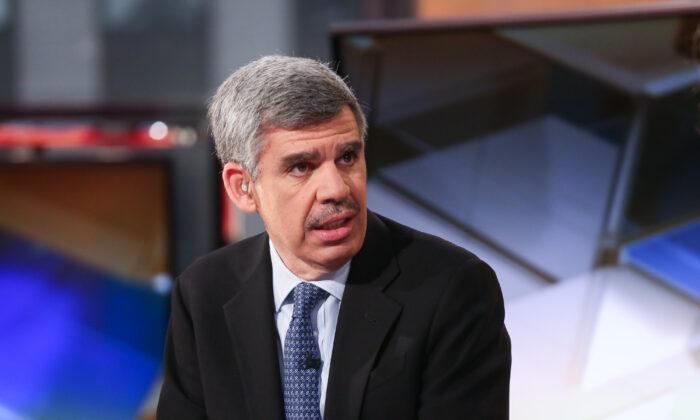The Personal Consumption Expenditures (PCE) Price Index–the Federal Reserve’s preferred inflation gauge–came in higher than market estimates, which could be “worrisome news” for the U.S. economy, says economist Mohamed El-Erian.
The core PCE Price Index, which eliminates the volatile food and energy sectors, edged up to 4.7 percent year-over-year, up from 4.6 percent. In addition, core PCE prices jumped 0.6 percent month-over-month, up from 0.4 percent. Both readings were higher than market forecasts.
Following the report, economists expressed concern for the broader economy.
“Often cited as the #Fed’s favorite inflation measures, the latest PCE numbers are unsettling,” El-Erian, the president of Queens’ College, Cambridge University, wrote on Twitter. “This is worrisome news for the economy, livelihoods and markets.”
Experts fear that this month’s PCE Price Index and other measurements might suggest inflation is stickier than many had hoped.

Last month, services and energy prices advanced 5.7 percent and 9.6 percent, respectively, compared with the same time a year ago. This was comparable to the consumer price index (CPI), which showed renewed growth in these two areas. The PCE Price Index and the CPI also confirmed that food inflation remains elevated at around 11 percent.
“Disinflation is over,” said Peter Schiff, the chief economist and global strategist at Euro Pacific Capital, adding that the Federal Reserve will unsuccessfully bring inflation down, but it will “succeed in bringing down the economy, financial markets, and creating a financial and sovereign debt crisis worse than 2008.”
The U.S. financial markets were not pleased with the statistics, as the leading benchmark indexes tumbled more than 1 percent to end the holiday-shortened trading week.
The Treasury market was up across the board, with the benchmark 10-year yield adding about 8 basis points to around 3.96 percent.
How Policymakers Are Reacting
Public policymakers are concerned that high inflation might persist and continue to decelerate at a slower pace.“The ongoing imbalance between the supply and demand for labor, combined with the large share of labor costs in the services sector, suggests that high inflation may come down only slowly,” he said.
“I had my funds rate a little bit above the median in that projection, and I haven’t really seen much change in my outlook for the economy since that time,” she said. “So I see that we’re going to have to bring interest rates above 5 percent. I do think we need to be somewhat above 5 percent and hold there for a time in order to get inflation on that sustainable downward path.”
The dot-plot revealed that the median policy rate was seen rising to 5.1 percent this year and then declining to 4.1 percent in 2024 and 3.1 percent in 2025.
The higher-than-expected PCE Price Index might support St. Louis Fed Bank President James Bullard’s case of hiking rates to nearly 5.4 percent as quickly as possible to bring down inflation.
While his colleagues might be reluctant to be more hawkish on monetary policy, Bullard thinks now is the time for the central bank to be more aggressive in its quantitative tightening campaign, especially as the national economy proves to be more resilient than what officials had projected.
Despite the disappointing inflation numbers, the White House was ebullient over the data.





